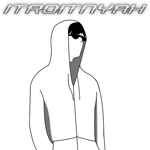So I have been slowly putting together my first attempt at a dubstep track.
One of the things that I have been struggling with is the transition between the build and the drop.
https://soundcloud.com/jasper-synth/transition/s-tpbYK
So if you guys could give me any feedback on this, that would be great.
And yes, I did post my drop in "rate my wubs" a few days ago.
Dubstep Transition
3 posts
• Page 1 of 1
Dubstep Transition
https://soundcloud.com/jasper-synth/back-at-me
My Tumblr
My YouTube
My SoundCloud
DAW: Logic Pro 9
Plugins: Sylenth, Sausage Fattener, Komplete 9, NI The Mouth, Ozone 5, Bitspeek
Jokeblue wrote:You fool. You've doomed the Spam thread to yet another, inevitable :3 spam.
My Tumblr
My YouTube
My SoundCloud
DAW: Logic Pro 9
Plugins: Sylenth, Sausage Fattener, Komplete 9, NI The Mouth, Ozone 5, Bitspeek
-

JSynth - Posts: 726
- Joined: 12 Dec 2012 10:48
- Location: not in the snow anymore
- OS: Not Windows
- Primary: Logic 9
- Cutie Mark: yo face
Re: Dubstep Transition
I'm at school right now, so I'm going to walk out on a limb here and assume some things:
Use more risers and effects. If you've seen producers go through making a track or something, you'll know they use a lot of effects. A good example of this would be Lilith - Varien (might have spelled it wrong, lol)
lose the repetitiveness of the drums, and lose the "roboticness" of the drums. Change up the kick to snare rotation. Unlike house, the kick snare rotation isn't just kick-snare-kick-snare on each measure. For dubstep it's more "melodic" I guess, where it'd go kick...snare...kick.snare...snare, or something along those lines. And for the hats, try adding some variation in the velocity, otherwise they may sound a bit "robotic".
And that's all I have for now. Of course, these are just assumptions, so don't take these too seriously just yet (except for the first tip, you want quite a few effects and risers in dubstep. Like, a lot). When I get home I'll do a more thorough critique.
Also, this should probably be moved to the music section.
Use more risers and effects. If you've seen producers go through making a track or something, you'll know they use a lot of effects. A good example of this would be Lilith - Varien (might have spelled it wrong, lol)
lose the repetitiveness of the drums, and lose the "roboticness" of the drums. Change up the kick to snare rotation. Unlike house, the kick snare rotation isn't just kick-snare-kick-snare on each measure. For dubstep it's more "melodic" I guess, where it'd go kick...snare...kick.snare...snare, or something along those lines. And for the hats, try adding some variation in the velocity, otherwise they may sound a bit "robotic".
And that's all I have for now. Of course, these are just assumptions, so don't take these too seriously just yet (except for the first tip, you want quite a few effects and risers in dubstep. Like, a lot). When I get home I'll do a more thorough critique.
Also, this should probably be moved to the music section.
-

itroitnyah - Posts: 2482
- Joined: 02 Mar 2012 20:27
- OS: Windows 7
- Primary: FL Studio 11
- Cutie Mark: Blank flank
Re: Dubstep Transition
haha, alright. Now that I'd had time to review it, I'll tell you right off the bat that this is really weak. There isn't much build of tension or release, the whole energy level just sorta sits there.
Here's an example of a transition I made in my current WIP: dropbox
Of course, this riser isn't exactly the best since I don't have a whole lot of experience under my belt with making music in general (1 year sounds like a lot, but it isn't, lol). But here's a list of everything I have inside this riser:
- A reversed crash and a regular crash
- 2 different risers (one is just a simple square/saw wave riser with some volume and pitch automations), and another is a premade one
- the lead synth
- the pad
- the pluck
- a high pass filter
- a downwards white noise sweep
- a little boomy down sweep
- kick and snare
What I did was I used one riser and a reversed crash to introduce the main riser into the drop. At the start of the riser to introduce the drop, I placed the whitenoise sweep and the boomy downsweep. Then the second riser pulled in, while the automation clips for the volume of the instruments swept up in time with the pitch and volume envelopes for the second riser. The pluck and pad pattern don't change from their original, but the lead synth changes to the most memorable part of the lead synth pattern. At the top of the sweep, there's a reversed crash. Then a half measure long break, and a regular crash at the same time as the drop kicks in to give it slightly more punch. And you can of course hear the drum roll that I have, and to be honest, your drum roll is pretty flimsy, you could probably lengthen the drum roll. And to top it off, I have a highpass filter cut off everything from about ~800Hz (an automation clip increasing the cutoff and then lowering the cutoff very quickly) to provide more tension.
Another thing is not to use reversed samples at the break between the riser and drop unless you can make it sound melodic and fit in. If you just leave it like the way you have just now, it sounds out of place, and really doesn't sound good at all. Sorta makes the song lose tension, imo. Using reversed samples in songs is a completely different story itself, so to just quicken this critique, I'm going to copy pasta a little thing from a different thread I said:
As for the drop, it's fairly weak itself. It's empty, and the volume levels of all the parts are really uneven. Try and make all the volume levels equal by ear, not by looking at the level meters (although that can work, depends on the distortion applied to each synth in the drop). Once that's done, it'll still be empty (I think), and you can layer on a pad or something to help fill in some space.
Here's an example of a transition I made in my current WIP: dropbox
Of course, this riser isn't exactly the best since I don't have a whole lot of experience under my belt with making music in general (1 year sounds like a lot, but it isn't, lol). But here's a list of everything I have inside this riser:
- A reversed crash and a regular crash
- 2 different risers (one is just a simple square/saw wave riser with some volume and pitch automations), and another is a premade one
- the lead synth
- the pad
- the pluck
- a high pass filter
- a downwards white noise sweep
- a little boomy down sweep
- kick and snare
What I did was I used one riser and a reversed crash to introduce the main riser into the drop. At the start of the riser to introduce the drop, I placed the whitenoise sweep and the boomy downsweep. Then the second riser pulled in, while the automation clips for the volume of the instruments swept up in time with the pitch and volume envelopes for the second riser. The pluck and pad pattern don't change from their original, but the lead synth changes to the most memorable part of the lead synth pattern. At the top of the sweep, there's a reversed crash. Then a half measure long break, and a regular crash at the same time as the drop kicks in to give it slightly more punch. And you can of course hear the drum roll that I have, and to be honest, your drum roll is pretty flimsy, you could probably lengthen the drum roll. And to top it off, I have a highpass filter cut off everything from about ~800Hz (an automation clip increasing the cutoff and then lowering the cutoff very quickly) to provide more tension.
Another thing is not to use reversed samples at the break between the riser and drop unless you can make it sound melodic and fit in. If you just leave it like the way you have just now, it sounds out of place, and really doesn't sound good at all. Sorta makes the song lose tension, imo. Using reversed samples in songs is a completely different story itself, so to just quicken this critique, I'm going to copy pasta a little thing from a different thread I said:
I'm thinking that the same tips I've written up in the other thread should apply to reversed vocal samples as well, but I can't be too sure. I've never experimented with reversed vocal samples or anything.myself wrote:A lot of vocal chopping, especially what Skrillex does, is by taking vocals from only one source. Cut out all the consonants, keep vowels only, like said above. The hard part is putting them all together to get them to work. A way to do this is to use only similar vowels. A and E are very similar, and if you listen to scary monsters and nice sprites you can hear that those are mainly the only vowels that Skrillex used. O and U are similar as well, so you would use them together. "I" doesn't seem to fit anywhere, I've never heard "I" ever used in a song where vocals are glitching similarly to Skrillex style. So just pair the vowels of the sample together, like I said. Of course, there's a bit more to it than that. Placement isn't something that we can really tell you how to do, it's just something that you have to experiment with and hope you get it right. Another thing, never switch between samples really quickly. Like, don't go A-E-E-A-E-A, because that doesn't actually sound very good. Use samples of the same vowel repetitively. A-A-A-A-E-E-E-E-E-A-A-A-A that will sound much better. And even another thing, they won't sound good together if you use the sample vowel samples, take different samples of each vowel. That will allow you to have "transition" vowels that sound like a mixture between an A and an E, use those between a solid A and a solid E to transition between them. It'll make it sound nicer.
Of course, when done correctly, you can indeed use AE and OU in the same glitching sample. It's harder, but you can do it with enough practice and when the time in the song agrees. E and O are pretty similar, similar enough that you could potentially use them together, although not often.
As for the drop, it's fairly weak itself. It's empty, and the volume levels of all the parts are really uneven. Try and make all the volume levels equal by ear, not by looking at the level meters (although that can work, depends on the distortion applied to each synth in the drop). Once that's done, it'll still be empty (I think), and you can layer on a pad or something to help fill in some space.
-

itroitnyah - Posts: 2482
- Joined: 02 Mar 2012 20:27
- OS: Windows 7
- Primary: FL Studio 11
- Cutie Mark: Blank flank
3 posts
• Page 1 of 1
Return to General Music Feedback and Advice
Who is online
Users browsing this forum: No registered users and 3 guests


